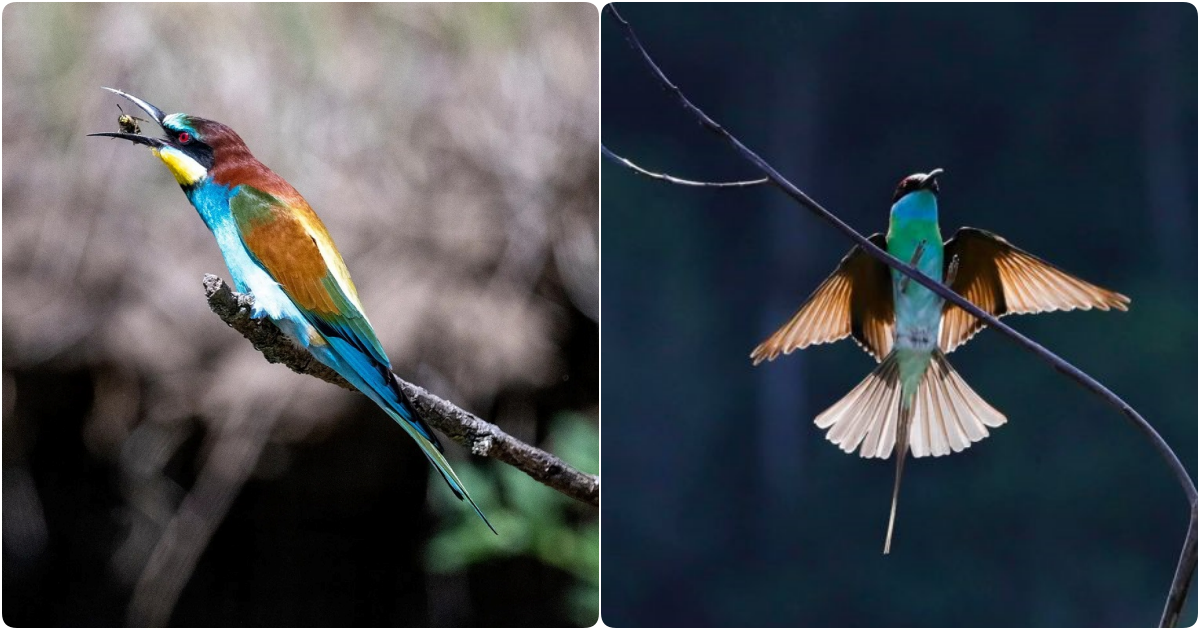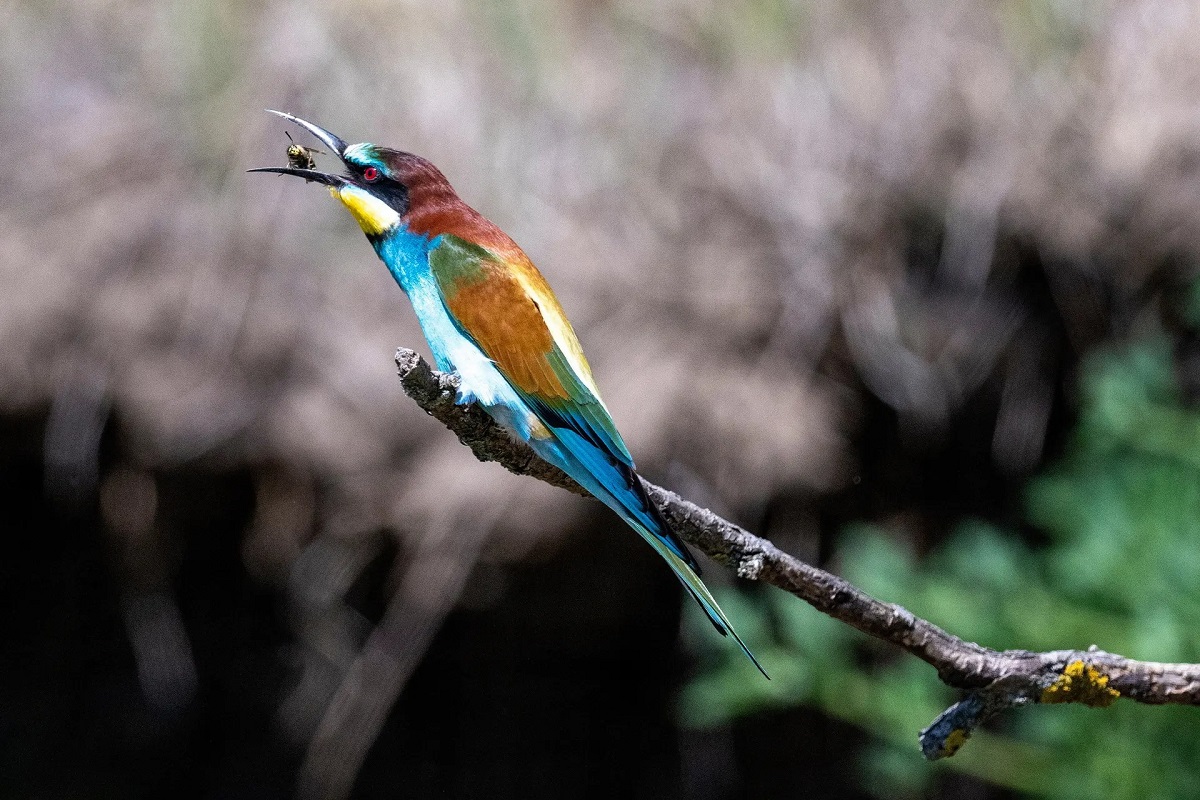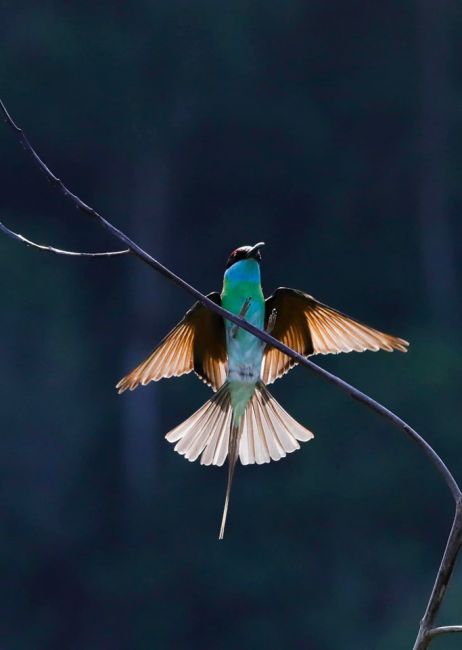The European Bee-Eater (Merops apiaster): A Marvel of Color and Behavior

The European Bee-Eater, scientifically known as Merops apiaster, graces the avian family Meropidae with its vibrant presence. This species finds its breeding grounds in the sun-soaked regions of Southern Europe, North Africa, and Western Asia. A migratory wanderer, it embarks on a journey to tropical Africa, India, and Sri Lanka during the winter months. Occasionally, this remarkable bird ventures beyond its conventional breeding boundaries, gracing western Northern Europe with its presence.

The European Bee-Eater stands as a testament to the allure of nature’s palette, adorned with resplendent plumage that mirrors its lively spirit. Its lithe form is embellished with a blend of colors: a tapestry of yellow and brown adorns its back, while its wings boast vibrant greens. Its bill, strikingly dark and sharp, serves as a perfect tool for its lifestyle. These birds are characterized by a body length ranging from 27 to 29 cm, which includes the two elegant tail feathers that grace their silhouette. Both males and females share similar appearances, making it challenging to distinguish between the two.
Feasting habits of the European Bee-Eater revolve around the order Hymenoptera, with a penchant for the Western honey bee (Apis mellifera) taking center stage. A study conducted in Spain revealed that these bees accounted for a significant portion of their diet, ranging from 69.4% to 82%. Surprisingly, their impact on bee populations remains modest, as their consumption remains relatively low. European Bee-Eaters are known to consume less than 1% of the worker bees within their habitat.
Further research delves into the dietary efficiency of European Bee-Eaters. Studies suggest that their food metabolism for weight gain is optimized when they consume a blend of bees and dragonflies, compared to exclusively feasting on either one. This unique dietary adaptation showcases the intricate connections between avian behavior and dietary preferences.
During the nesting season, European Bee-Eaters come together to create colonies, often selecting sandy beaches near riverbanks as their nesting sites. These diligent birds excavate long tunnels, within which they lay 5-8 spherical white eggs around early May. The male and female share the responsibilities of nurturing and incubating these eggs for approximately three weeks. A remarkable aspect of their bonding is their shared duty of eating and resting side by side.
In the courtship ritual, the male demonstrates his dedication by offering a larger piece of prey to the female. This ritual not only showcases their connection but also illustrates the complex dynamics of avian relationships. While most males maintain a monogamous partnership, instances of polygamy, with a male having two mates, are observed occasionally, adding another layer of intrigue to their social structure.






